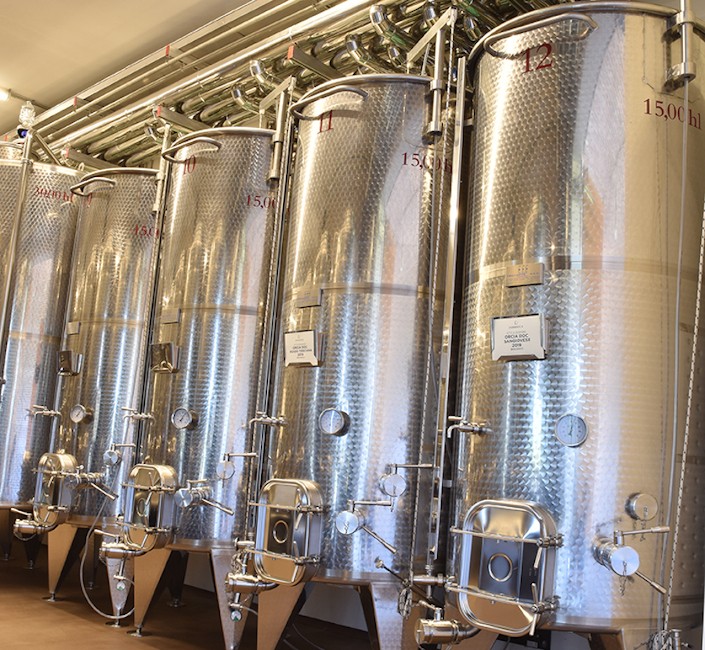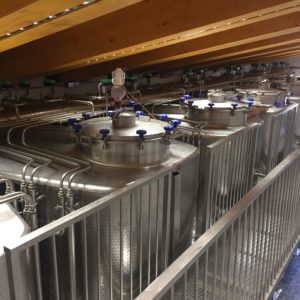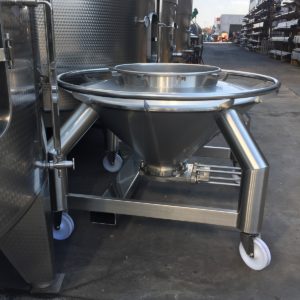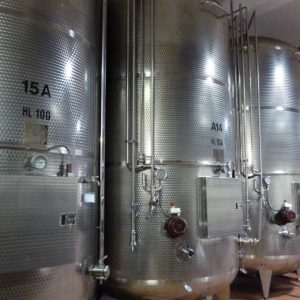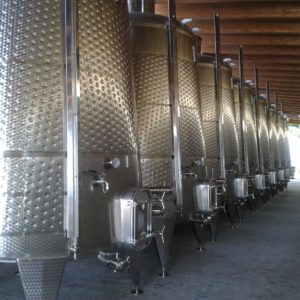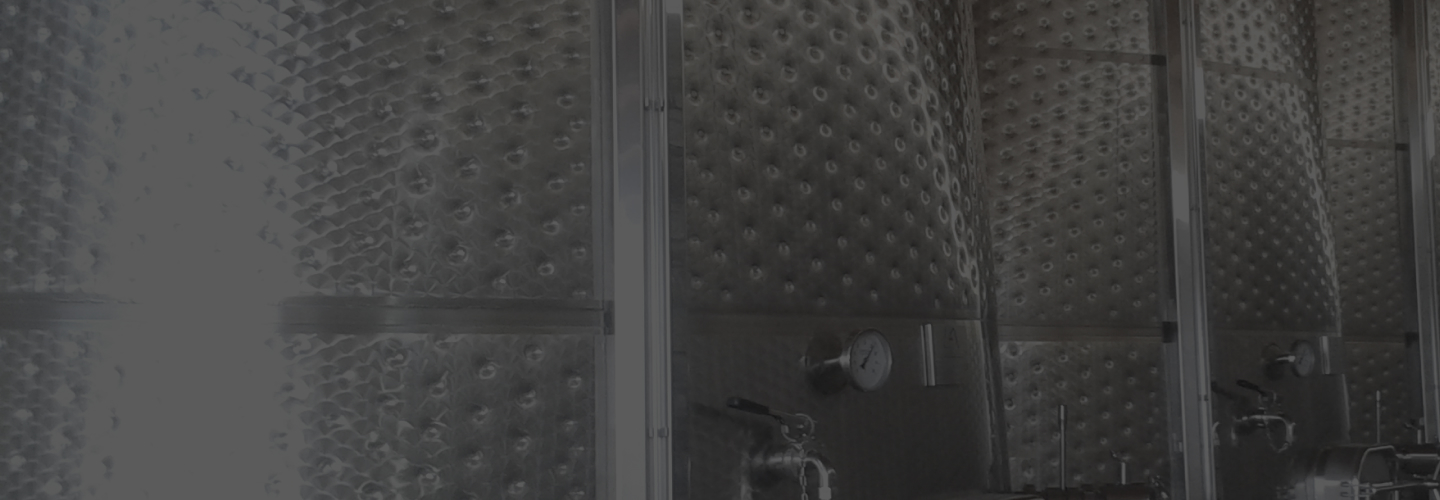
Cylindrical tanks
Then all the others came from it.
The structure of the cylinder allows to reach the best constructive efficiency, the best cost-capacity ratio and its solidity allows to have the highest capacity compared to other shapes. The circularity of the structure also allows to install many more accessories than the other shapes inside the tank.
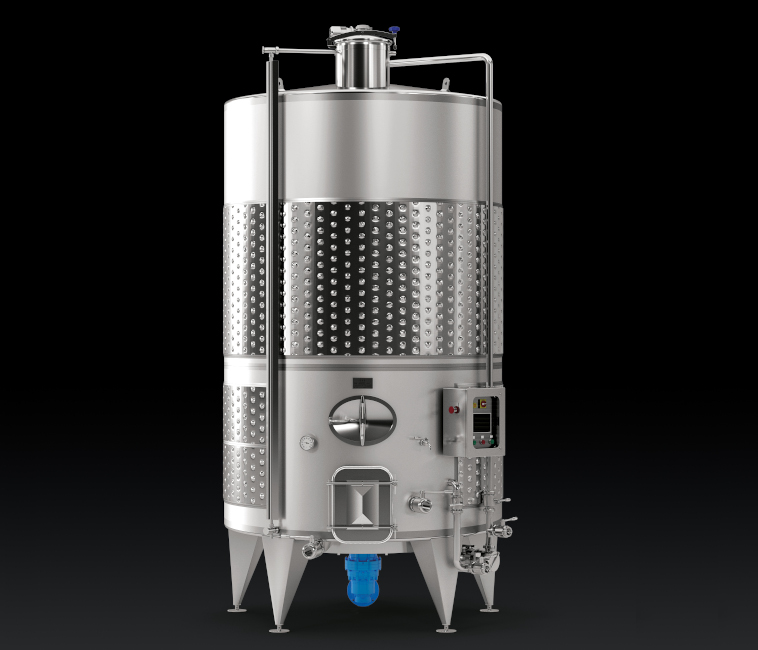
SMART TANKS
FULL AUTOMATION
Achieve the optimal balance between human and machine. Cut human hours by automating pump over, wetting, turning over and extraction
HOLDING THE REINS OF CONTROL
Ability to monitor the wine-making process directly from your mobile phone in real time.
THE FLEXIBILITY OF YOUR WORKPLACE
THE CLEANLINESS YOU NEED
All the accessories for the tank can easily be removed and are of exceptional quality.
IMPROVED WINE
The system for turning over the cap improves tannin and colour extraction.
IDEAL TANK BOTTOM FOR YOUR NEEDS
Our fermentation tanks come in different options to optimise the use of your tank: the bottom can be flat, conical or convex, or have diffusers.
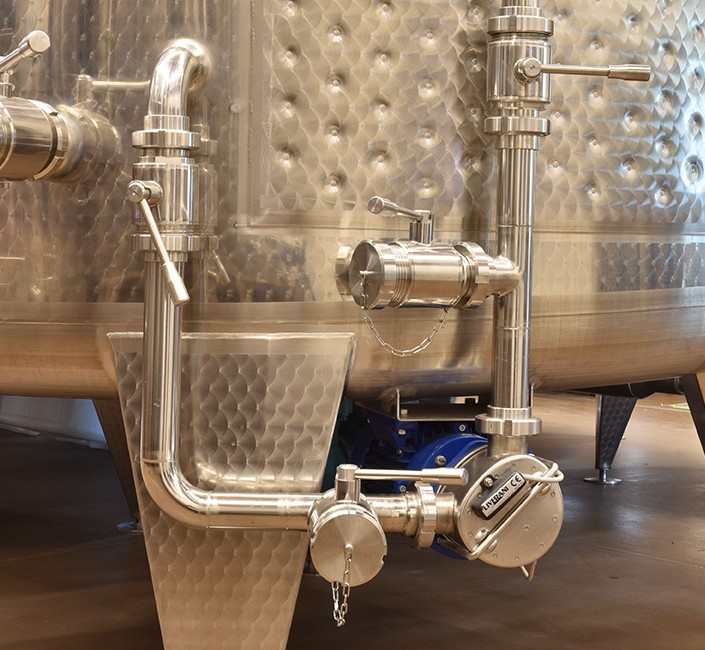
FOCUS FERMENTATION TANK
These can be used to make red wine or, with the addition of specific accessories, white wine. Fermentation tanks can use different pump-over techniques: automatic with the pump mounted to the tank or simply a tube, both with either a double-arm swivel or motorized rotating spray-head.
The addition of heat exchange plates ensures the temperature of the product is constantly monitored and controlled.
The fermentation tanks can have a mechanised extraction system added (VSM).
The disposal of the marc is mechanised as a rotating arm pushes the marc towards the hatch flush on the bottom of the tank where it can be extracted. Rotating arms can even be placed in the centre of the tank to help with keeping the cap wet and turning it over.
SPACE IS YOUR ALLY
BEYOND SIZE LIMITS
Our products meet your size requirements. Our products can be anything from in excess of 8,000 hl to a simple 100 l tank.
ON SITE CREATION
For complex projects, where transporting a tank would be problematic, we have the know-how and equipment to create our products directly on site.
DON’T LIMIT YOUR REQUIREMENTS
The shape of your cellar isn’t a limitation for us. Your product is extraordinarily valuable and you need to be able to store it. We build tanks of all shapes and sizes.
HEIGHT OPTIMISATION
Building space often prevents the use of multiple series of tanks. The solution: go up.
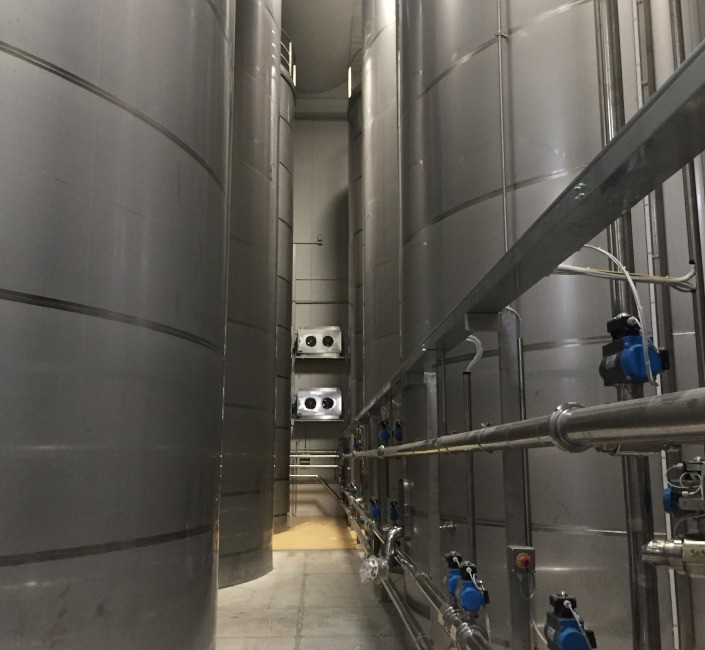
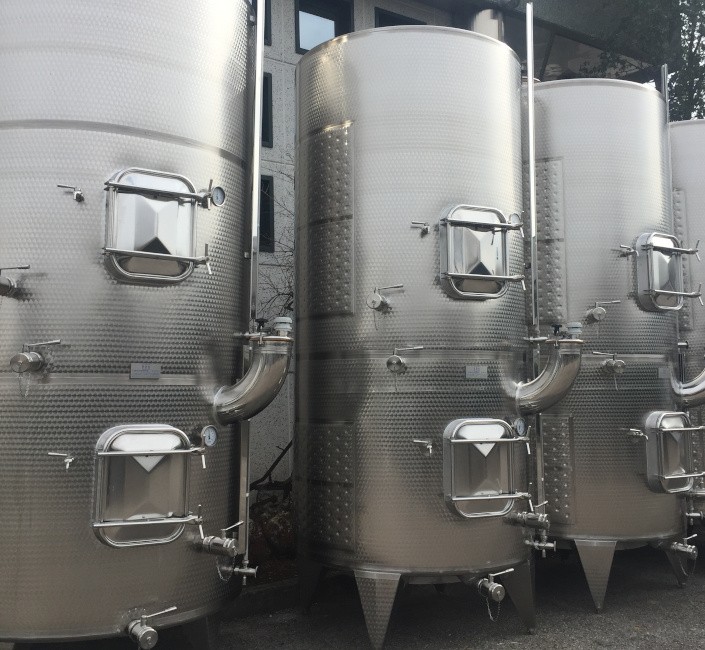
DON’T STOP BUILDING
TWO BIRDS, ONE STONE
Having one tank on top of another doesn’t limit their use. Each cell can be used for a different product and fitted with different accessories and mechanical parts.
CONTACT FREE TOPS AND BOTTOMS
The bottom of the upper section and the top of the lower section are two distinct elements. The reason for this structure is to create a gap that ensures each part is completely independent.
GRAVITY ON YOUR SIDE
Having one section on top of another working in a complementary fashion on the same product allows gravity to be used, removing the need for other mechanical solutions.
ADJUSTABLE CAPACITY TANK
AVOID SECONDARY COSTS
Using these tanks means it isn’t necessary to install inert gas saturation systems.
THE STRENGTH YOU NEED
The robust nature of the arms makes it easy, when using a solid winch, to moving the floating top, even in especially large tanks.
ONLY NATURAL AROMAS
Since the top of the tank can be moved up and down, it prevents inert gas getting in and causing the wine to oxidise.
